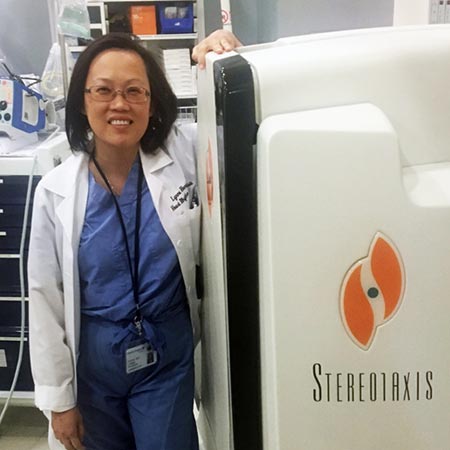
Dr. Lynne Hung
Mission Hospital
It’s not only safer and more precise, but allows you to think better.
“Before Stereotaxis, we stood next to patients, manually pushing catheters and using X-ray for positioning,” Dr. Lynne Hung recalls of her time before the EP team at Mission Hospital in Southern California installed the Stereotaxis RMN system. Now they can sit in a control room, using a mouse to control movements and analyze data in real-time. “It’s not only safer and more precise, but allows you to think better”.
Dr. Hung also remembers her initial experiences with robotic navigation while it was still in its infancy: first at St. Mary’s Medical Center in Evansville, Indiana in 2006 and later at Scott and White Medical Center in Temple, Texas. “My first case was an AVNRT, which took about 4 ½ hours. It was so exciting to be sitting down,” she says.

